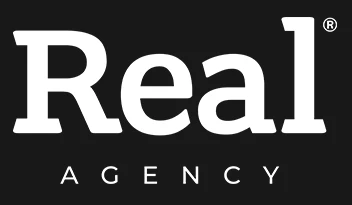Top Tips On How eCommerce Owners Can Secure A Rich Result In Google’s SERPs
You’ve all noticed the slightly longer, information-heavy results appearing in Google’s SERPs recently, right? Then I’m sure it comes as no surprise to hear that everyone is eager to get their hands on a taste of the spotlight, particularly eCommerce owners!
What Are These New Results And When Did This All Happen?
As of December 2017, “rich results” was the term given to these special search features and enhancements, although individually you may hear them referred to as rich snippets, rich cards and enriched results. Rich results were introduced with the intention of making the most relevant search result stand out in Google’s SERPs.
Rich results were introduced with the intention of making the most relevant search result stand out in Google’s SERPs.
Tweet this now
They do this by incorporating additional information in the form of bullet point lists, pictures, review stars, price tags and so on.
If you want to see what I’m on about, type ‘how to bake a cake’ into Google and you’ll hopefully see something like this at the top of your organic search results:
As you can see, Google has pulled through significantly more information from the article to provide the user with step-by-step instructions on how to bake a cake from the initial Google SERP. The result also takes up a much larger space on Google’s SERPs, stealing the user’s attention away from lower results. The reduced focus on lower, plain text results further supports the need to tailor your data to best acquire a rich result.
So, What Can You Do To Help Increase Your Chances Of Securing The Limelight?
1. Make structured data your best friend
The Google Search Console (GSC) tool, structured data, is the holy grail of obtaining rich results. As an eCommerce site owner, you should already own a GSC account so hopefully, this is something you are already aware of – and if you don’t, then we recommend you set up an account immediately here… if not for rich results, then for keyword analysis sake!
The tool:
Structured data is the first tool you will find under the ‘Search Appearance’ category in GSC. It is used to provide Google with the key information on a specific page of your website and is typically used for informative pages such as blog articles and product pages.
The data highlighter tool also in the ‘Search Appearance’ category works hand in hand with structured data, allowing you to highlight specific pieces of information on the page that you want Google to read – for example, product pages.
Cleverly, once you have provided Google with the key information for one type of page, it pulls through the key information on similar pages. Helping Google better understand your page content means the search engine can better judge the relevancy of your page content and display the information in those all fancy rich results.
2. Consider using a JSON-LD format for your structured data
Building on point one, there are three formats in which Google supports structured data: JSON-LD, Microdata and RDFa. However, Google’s recommended and preferred format is JSON-LD.
JSON-LD stands for ‘JavaScript Object Notation – Linked Data’ which, and you can probably guess, is displayed in a JavaScript format. LSON-LD works to report the information on the page to Google without disturbing what visitors see. It does this by separating the information into its own section, avoiding simultaneously showing something to the user while also explaining it to Google which can get a bit messy. Our theory is that if you use the JSON-LD format to display your data, Google is more likely to show your information over another in a less preferred format.
For more information on JSON-LD and how to switch to this format for linking data, click here.
3. Tailor the layout of your product pages and articles to best suit rich results
Rich results offer a lot more potential to grab the users attention now, so you need to write in a way that maximises your chances of owning that space. Unfortunately for eCommerce owners, information-heavy sites will have an advantage here since it’s a lot easier to incorporate step-by-step instructions, recipes and bullet points into a blog article than it is on a product page. What this does stress though, is the importance of running a blog on your website. Including a well-structured blog on your website not only provides an avenue to plug keywords but also an increased chance of securing a rich result – and therefore an increased amount of traffic to the site. We recommend structuring your blog articles with questions and bullet-pointed answers where possible.
Additionally, there are tweaks which can be made to the layout of your product pages which will also help Google boost your search result appearance. By ensuring your product pages include star ratings, reviews and the price tag of the product in a standard layout, these can be highlighted with the data highlighter tool and pulled through as important information to appear as a rich result.
As an example, if you type ‘pink umbrella’ into Google, you will see the Jolly Brolly organic result features star ratings, how many votes were counted in this rating, and the product price tag.
I’m sure you will agree that this is far more enticing and weighty than the plain text search result by eBay:
This eye-catching layout of results also means watching the reviews left on your site is more important than ever. You will want to ensure that the good reviews outweigh the bad to make your results the most appealing on Google SERPs.
However…
While all the above are methods of best practice for obtaining rich results, there is no way to guarantee these rich results. Google, rather annoyingly sometimes, does as it pleases and may still decide not to show a rich snippet for your site. Reasons for this are subject to vary, but Google provides the following explanation for a rich result absence in its Structured Data General Guidelines.
Additionally, if you are still unsure whether your page is eligible for rich results after implementing the above suggestions, you can check your site with Google’s new Rich Results Testing Tool.
Finally, What Changes Can We Expect To See As A Consequence Of Rich Results?
1 – Click-through rates are going to be affected
As mentioned previously, rich results occupy a large space on Google’s SERPs. In effect, this should see an increased amount of clicks to those luckily hotspots and fewer clicks on more simple plain text results lower down the page.
2 – Positions lower down search results are likely to suffer
As far as we know at this stage, more space is being given to rich results. That means there simply isn’t the same amount of space on a screen at any one time – desktop, tablet or mobile. Search results that were visible before won’t be now as rich results higher up the page push them below the fold, so being in position eight on page one may not have the value it once did – we just don’t know yet.
What Should You Do Next?
If you should take anything away from this post, it’s that you need to spend a bit of time in GSC ensuring the key bits of data on your product and blog pages have been highlighted and recognised as structured data.
On top of that, the best strategy would be to hop on Google and look at changing your data format and the layout of your information to Google’s preferred styles.
Do as Google pleases and you can’t go wrong!





